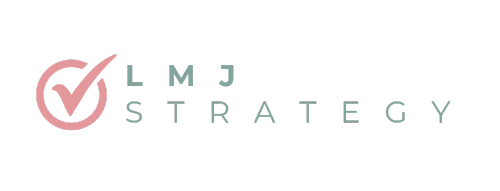It’s been just under a week since my kids have gone back to school, and while the summer heat is still in full swing, every time I look around there are signs of fall nearby. From shop windows to Facebook ads, pumpkin spice everything, and even a few over-achieving trees losing their leaves… but it’s more than just that.
In my last blog post, I talked a lot about the mental shift that I experience at the end of the summer, and today I want to give you some practical steps to help you navigate that change. With this new rhythm and structure settling in during these last days of summer, let’s walk through some key assessments and adjustments that will get your operations ready for fall and the holiday season.
Week 1: Systems Audit
Taking a look at how your systems are performing is a key portion of any audit. Not only should you look at what systems you’re currently using, how they’re working, and if they’re getting you towards your goals, but you should also be looking at how they’re operating in times when you’re more hands off, and whether or not they’ll support you when things are really busy.
As you’re reviewing each system, here’s the key question to consider: ‘Did this system hold up when I needed it to (during vacations, busy periods, unexpected interruptions) and will it handle growth?’
Don’t forget: A system isn’t just a program you pay for. Systems are your routines that keep the business operations running smoothly. It could be anything from your sales funnel to your bookkeeping software!
For each system, you should ask yourself the following questions:
- What parts worked smoothly even without you there?
- What parts made you scramble when it should have been flexible?
- Did it frustrate you enough that you avoided using it?
- Would it stand up to a heavier workload?
Recently during a systems audit, I evaluated switching to a new email marketing platform that promised to be more cost-effective and feature-rich. After testing it thoroughly, I discovered that what looked great on paper didn’t work well for my specific operations. It was actually taking me more time each week and would have cost more for the features I actually needed. Instead of pushing through with the ‘shiny new solution,’ I switched back to my original platform and found better ways to leverage what it already offered.
Sometimes your systems audit will reveal that what you thought needed changing actually just needs to be used more strategically. Not every ‘improvement’ is actually an improvement for your specific business. As small business owners, we’re constantly bombarded with promises of better, faster, cheaper solutions. Most of the time, the system that’s already working well for you is going to be better than whatever new solution is promising the world.
Action Items for Week 1:
- Review your software/subscription spreadsheet (if you don’t have one, look into my Operations Assessment Workbook that has one included!)
- Test your systems with future scenarios in mind
- Plan time ahead so you can learn more and make sure any switches are beneficial. If they aren’t, you have time to turn around and go back to what works!
Week 2: Schedule & Boundary Adjustments
Now that many of us are settling into a more solid routine, it’s time to think about what this ‘new normal’ means for your availability. For me, this fall I’m taking a much more structured approach to my planning. I’m blocking off key days well in advance for potential speaking engagements and workshops, so when opportunities come up, I already have the time protected. I’m also scheduling dedicated blocks for content creation and regular 1:1 meetings with my new team member to make sure we stay aligned.

Scheduling further out actually gives me more flexibility later on. When I plan ahead like this, I’m not constantly scrambling to find time for important projects or having to turn down good opportunities because my calendar is already packed with smaller tasks.
Week 2 Action Items:
- Update your calendar/scheduling tools with new availability – Make sure your system reflects your actual fall schedule
- Mark days off and vacation time in your calendar, as well as any administrative days to stay on top of your tasks
- Block time to update any systems that need updating – Based on your Week 1 audit findings, schedule the actual time to make those necessary changes
- If you want to go deeper, consider doing the full Operations Assessment Workbook – This gives you a comprehensive baseline and goal-setting framework
Resources & Next Steps
Ultimately, the changes you need to make are individual to your business. Even if your schedule hasn’t changed during the back to school timeframe like mine has, I still encourage you to complete a systems audit, and just do a check in on your schedule and boundaries to make sure that they’re still honoring your goals and commitments!
If you’d like to talk about how to set up systems that make these seasonal transitions smoother, or how to rebuild your fall routine in a way that actually sticks, I’d love to connect. Let’s book a discovery call so we can meet and explore what support might look like for you and your business.
Your Next Step to Building a Productive, Balanced Workday
When you’re running a business solo, it’s easy to feel bogged down by everything you “should” be doing. Are you ready to go from overwhelmed to organized? Book a free discovery call with me to explore your top productivity challenges and find solutions that fit your business.

